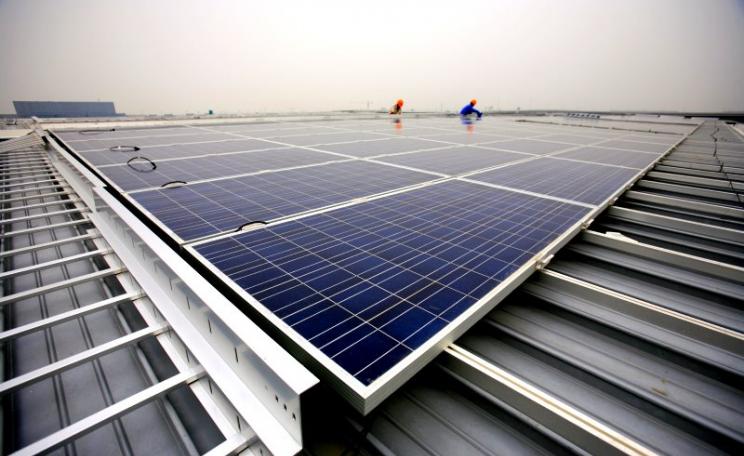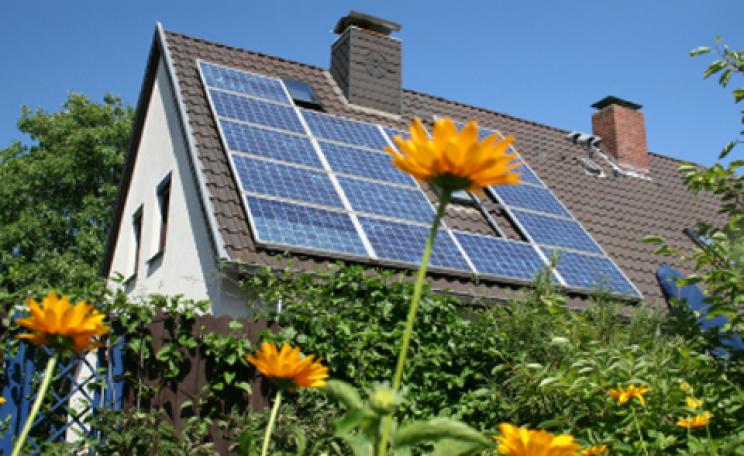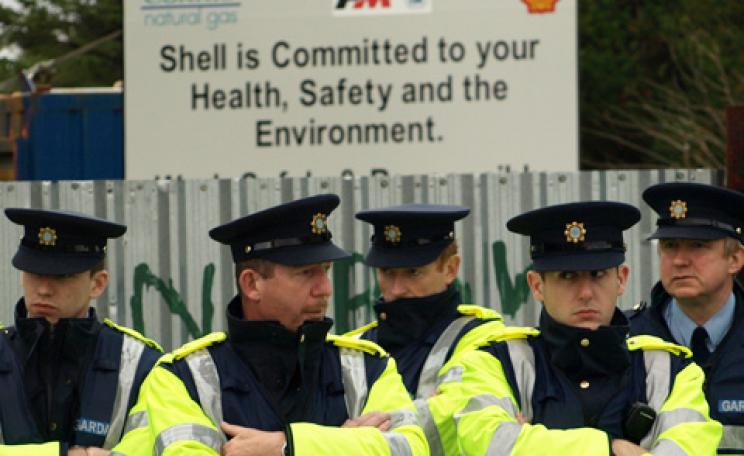High street chains such as Tesco and B&Q are believed to be in discussions about becoming Green Deal lenders
Almost every home in Britain - 26 million of them - will have to be refurbished if we are to meet our carbon reduction targets. So far, hardly any have been completed. The government hopes to break the deadlock with its 'Green Deal', which offers homeowners and tenants, plus business occupiers, the chance to borrow money to make their homes and business premises more energy efficient.
What makes the Green Deal different to any other loan is that the borrower repays the money from savings on their energy bills, which should mean they can slash their carbon emissions without any cost to themselves. The Green Deal is part of the Energy Bill which got its second reading in parliament recently. The government hopes the first Green Deals will be made in autumn 2012, after consultations and secondary legislation is completed.
The Green Deal has been hailed by campaigners such as the UK Green Building Council, an alliance of architects, engineers, construction companies and property developers as 'A once-in-a-generation chance to reduce carbon emissions, improve the fabric of our homes and workplaces and create potentially hundreds of thousands of new jobs.' Yet campaigners are also worried that the Green Deal will fail to achieve the massive scale of refurbishments needed, because the incentives won't go far enough to get home owners and business occupiers on board.
Can the green deal work?
The key concern is that the interest rates on the home improvement loans will be too high, leaving little left for the borrower in terms of savings on their total energy costs. All the financial details of the scheme are yet to be worked out: 'The next six months will be critical,' says Ed Matthew, programme director of Transform UK, which campaigns for the establishment of a Green Investment Bank and related issues.
Transform UK wants the loans to be offered at or close to zero per cent interest, using a Green Investment Bank and subsidies: 'If you don't make this as financially attractive as possible for the consumer, they will not take it up. If the loans are only offered at commercial rates, I guarantee it will fail,' says Matthew, who spent eight years at Friends of the Earth as leader of its climate economics team before founding Transform UK. Paul King, chief executive of the Green Building Council, agrees: 'We need to see low interest rates on Green Deal finance and strong incentives for take up, for both homeowners and businesses,' he says. The Green Building Council wants to see council tax rebates and cuts in stamp duty offered as an extra incentive for people and businesses to undertake refurbishments.
The Climate Change Act of 2008 requires the UK to achieve a 34 per cent cut in its carbon emissions by 2020 and an 80 per cent reduction by 2050, against 1990 levels. Cutting carbon emissions from homes and commercial buildings will be an essential part of this process. Thirteen per cent of the UK's carbon emissions come from heating and hot water for our homes, which is mostly gas-fired. A further 20 per cent comes from our workplaces.
Under government plans, those who take out a green deal loan would see a 'green deal charge' on their energy bills. If the property is sold or the tenant moves out, the payments are continued by the incoming bill payer. A loan would only be available if the expected savings can be shown to be greater than the costs attached to the energy bill. Independent, accredited advisers would assess what work should be done to a property and the likely savings that would arise, while the work itself, such as installing insulation and double glazing, would also be done by properly qualified and accountable companies.
Tesco and B&Q taking interest
Although the government merely talks about 'private companies' providing the loans, it is believed that high street chains such as Tesco and B&Q are in discussions about becoming Green Deal lenders, as well as high street banks and energy companies. Ed Matthew points out that the scale of the task and the sums of money involved are huge.
According to Matthew, a thorough home refurbishment costs a hefty £10-£20,000. Although loft insulation is cheap and usually pays for itself within a year, other items such as insulation for the walls and under-floor areas, double glazing and some renewable energy generation such as solar thermal for hot water or solar PV for electricity, are much more expensive. He believes virtually all of the UK's 26 millions homes need substantial refurbishment work. That means the Green Deal would have to achieve 680,000 home refurbishments a year, every year between 2012 and 2050, in order to meet the 80 per cent carbon reduction target.
Matthew admires the German system of loans for home refurbishments, where up to £72,000 is available per home at interest rates of just 2.65 per cent. The loans are cheap because the money is made available at low cost to the commercial banks through the state-owned bank KfW. A further subsidy from the German state also keeps the interest rate down. As a result, the loans are very popular and around 100,000, good-quality home refurbishments are completed in Germany every year, Matthew says. 'The German government's view is that people won't take up these loans en mass unless you make it as financially attractive as possible,' he adds.
Following the German example
However, Matthew says our government has been ominously silent on the issue of ensuring low interest rates for the British system. 'I'm concerned that they haven't been talking about using the Green Investment Bank for this, they haven't been saying they need to provide a subsidy,' he says.
Paul King of the UK Green Building Council is also worried: 'Unfortunately, hoping that the Green Deal will simply 'catch on' is very optimistic. It's critical that the finance is provided at sufficiently low interest rates,' he says, adding, 'Householders need to be given a clear signal that they will be expected to refurbish their home, either with fiscal incentives that link rates of stamp duty or council tax to the level of energy efficiency, or, we may have to bite the bullet and say people won't be able to rent or sell their home until it meets a minimum standard.'
Amory Lovins, founder of the Colorado-based energy efficiency think-tank, the Rocky Mountain Institute, described the UK's housing stock as 'some of the most inefficient in Europe' while speaking at Chatham House in London in November. James Brew, principal architect at the institute, says this is partly because the UK has mainly used masonry and stone to build flats and houses: 'While this method is high in thermal mass, long-lasting and durable, it is often the leakiest method of building, without proper attention to detailing and air-sealing methods,' says Brew. He believes that 'simplicity is the key' for any scheme to encourage mass refurbishment.
While the government, campaigners and loan providers thrash out the details of the Green Deal over the coming months, there is one other factor that may prove decisive in ensuring the scheme is popular: rising energy costs. In October 2009 the industry regulator Ofgem predicted that energy bills would rise 14 to 25 per cent by 2020, because of the cost of replacing outdated power stations, investment in clean energy to meet climate change targets, plus spending on new gas importation and storage facilities, to compensate for the decline of North Sea gas. A 25 per cent increase would add £275 to the average household energy bill of £1,100 a year. If that doesn't persuade householders to refurbish, nothing will.
| READ MORE... | |
 |
GREEN LIVING How to green your flat on the cheap Small, inexpensive changes can add up to big savings when it comes to greening a rental property |
 |
GREEN LIVING Building houses with straw bales A house built with straw could cost as little as £70,000 to build - and some are still standing after 140 years. Barbara Jones' fantastic book Building with Straw Bales reveals all you need to know |
 |
GREEN LIVING PassivHaus construction: the future of UK housebuilding? German design, British location, tropical climate. Super-efficient PassivHaus construction makes for warmer homes and lower energy bills. So why aren't we all building this way? |
 |
GREEN LIVING Turning our Victorian terrace into an ecohome: part six – ventilation Better insulation means more warmth but also more mould and condensation. Sue Wheat's eco retrofit continues with a look at a super-efficient ventilation system that recycles heat while stamping out damp |
 |
GREEN LIVING Turning our Victorian terrace into an ecohome: part three - floors Insulating the floor can be fiddly, messy and costly. Luckily, there are simple, cheap options too as Sue discovers |








